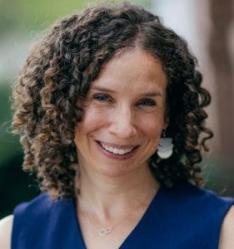A new study of the effects of Tennessee’s Voluntary Pre-K (TNVPK) program has ignited debate about the benefits of preschool right at a time when the Build Back Better bill—which includes historic investments in children and families through early care and education (ECE)—is stalled in Congress. The study, which examines the program’s impact through sixth grade, confirms what we already knew: The Tennessee program as it existed in 2009 and 2010 led to worse academic and behavioral outcomes than the available alternatives. Critics are asking whether large-scale investments are justifiable in preschool, and in ECE programs more broadly, given the findings of this careful experimental study.
Our read of the very large existing literature on the effects of preschool and other public investments in children’s early years leads us to conclude: Substantial investments in ECE are well supported by research, make good policy sense, and are urgently needed. This new study doesn’t change that. It does, however, drive home just how critical it is to hold the line on quality in any ECE expansion, and to continue to learn how to design programs so they best serve children, families, and society.
Since the 1960s, over 70 reasonably well-conducted evaluations have examined the effects of preschool versus local alternatives, along with dozens of studies that compare different preschool models to each other. After the TNVPK findings through third grade were released, a group of ECE scholars (including three among our authorship team and Mark Lipsey from the TNVPK research team) came together to author a Brookings consensus statement that summarized decades of research. Five takeaways from this 2017 statement, and new findings from other preschool programs since, help to put these latest TNVPK findings into context:
- On average, children who attend preschool enter kindergarten with stronger school readiness skills than if they had stayed home. Importantly, benefits are larger for children from families with low incomes, dual-language learners, and children of color. Without public programs, both economically marginalized and middle-class families often have trouble affording preschool and are left with lower-quality options than they would like.
- Public preschool programs vary in how, and how well, they operate. Today’s public preschool programs are largely in good shape in terms of class size, teacher-child ratios, basic safety, classroom organization, and emotional warmth. However, teacher compensation lags K-12 in many systems—driving high teacher turnover and undermining quality—and instructional quality is barely adequate in most large-scale programs nationally. Moreover, harsh teacher-child interactions can occur even in state preschool programs that are reputed to be of high quality on average. Play- and evidence-based curricula with a specified scope and sequence and regular in-classroom coaching tied to curriculum implementation can be powerful levers for improving quality in large-scale programs, yet they are not used in most of today’s programs.
- Some public preschool programs improve children’s learning outcomes more than others. Preschool programs differ widely in the experiences they provide, and so do their initial and longer-run effects. Some of the more effective programs have been implemented and evaluated on a large scale. Recent research suggests that universal public preschool programs move the needle on learning gains for children from families with low incomes more than income-targeted programs like the Tennessee program.
- Children who didn’t attend preschool appear to catch up, partially or fully, to children who attended preschool on their early elementary school test scores. The reasons for this pattern are not yet well understood and are the subject of active research, including through the Institute of Education Sciences’ Early Learning Network. One possibility, also acknowledged by the Tennessee team, is that it may matter which skills are emphasized in programs and measured in studies. Broadband skills like vocabulary and problem-solving show less “catch up” than skills like basic numeracy and letter knowledge. There is also growing evidence that what happens after preschool matters for whether the preschool boost lasts into elementary school. Recent research from New York City, Boston, and the Head Start program shows that there are malleable factors in the early elementary years, including aligned instruction that builds on what children learned in preschool and higher-quality elementary school experiences that can help sustain the preschool boost.
- Regardless of medium-term effects, most studies that follow preschool attenders into adulthood find positive effects on important outcomes like school attainment and earnings. This pattern holds both for smaller-scale studies from decades ago as well as in all three national datasets available for studying the long-term benefits of Head Start. Since the 2017 consensus report, the evidence base for public investment has grown stronger, with findings of lasting effects through high school in Tulsa, eight grade in North Carolina, 10th grade in New Jersey, and early adulthood in Boston. Replication of findings across contexts with strong quasi-experimental designs is as much a gold standard in the field as is a single RCT study.
To be sure, the field needs to grapple with the TNVPK results given its rigorous study design. The findings should not be dismissed or waved away. But at a time when the vast majority of 3- to 5-year-olds are already in regular, out-of-home care—and the overall evidence on preschool clearly shows positive effects—the questions to prioritize no longer concern whether preschool works, but how can preschool work better. Indeed, we don’t ask whether we should invest in the elementary school years, we ask how well it is going and how could we do it better. Those are the right questions in ECE, too. For researchers, the task ahead is thus to continue to examine how to scale high-quality preschool programs, ideally in close partnership with practitioners, and which models work best for children, families, and teachers.
In terms of policy, most Americans want the government to have a hand in helping improve ECE access and quality. Families and children in this country need ECE options just as they need elementary schools. Public ECE investments are not just investments in children’s future. They ease the child care cost burden of families and can facilitate parental employment, making them investments in the U.S. economy as well. If the universal preschool component of Build Back Better passes as proposed, it would provide the resources needed nationally for critical quality supports like small child-teacher ratios, highly trained and qualified teachers, evidence-based and play-based curriculum, coaching for teachers, and a mixed-delivery approach with classrooms in public schools and community-based settings. We know this blueprint can work.
Especially in the wake of COVID-19, the main takeaway from the large body of research on ECE programs, which now includes this new study from Tennessee, is not that we should turn away from public investments in ECE. It’s that we need to finally build the high-quality system that our economy needs—and that our young children, their families, and educators deserve.
The Brookings Institution is committed to quality, independence, and impact.
We are supported by a diverse array of funders. In line with our values and policies, each Brookings publication represents the sole views of its author(s).







![Leo, left, and Jeffery, right, listen as their teacher, Justin Armbruster, goes through a math lesson at Rochester Elementary School in Rochester, Ill., Wednesday, September 15, 2021. Illinois students and school staff in K-12 and early childhood care centers are required to wear masks indoors because of the COVID-19 pandemic. Illinois students and school staff in K-12 and early childhood care centers are required to wear masks indoors because of the COVID-19 pandemic. [Justin L. Fowler/The State Journal-Register]Rochester School District](https://www.brookings.edu/wp-content/uploads/2021/11/2021-09-17T102557Z_1037560367_MT1USATODAY16767858_RTRMADP_3_LEO-LEFT-AND-JEFFERY-RIGHT-LISTEN-AS-THEIR-TEACHER.jpg?quality=75&w=500)



